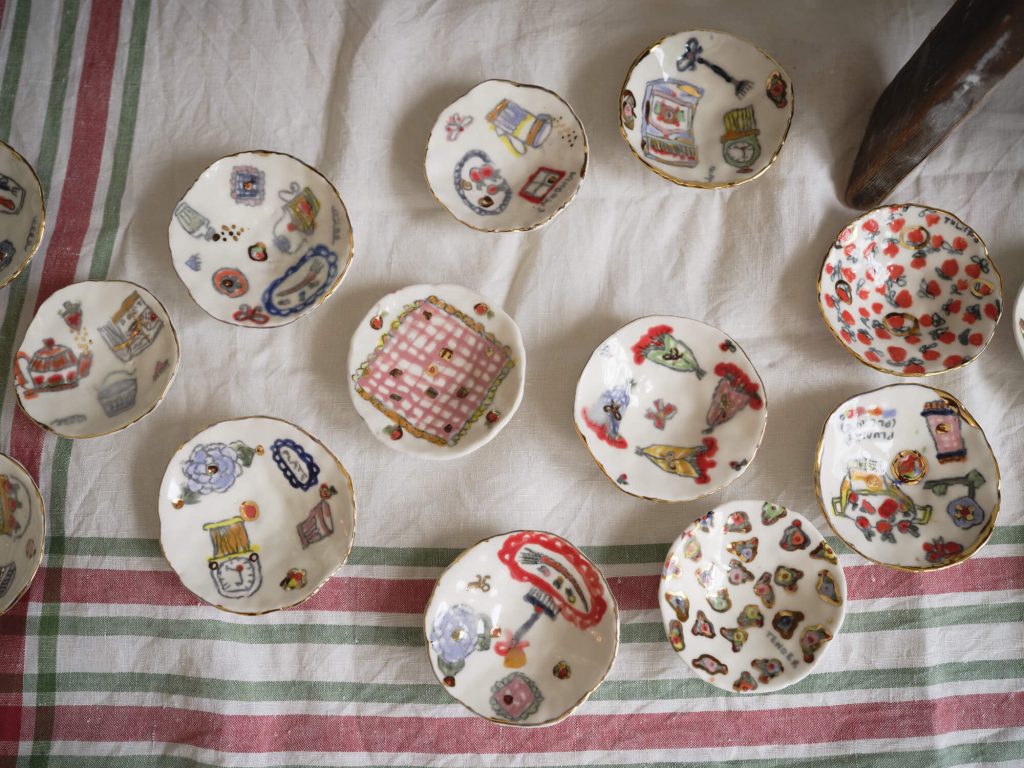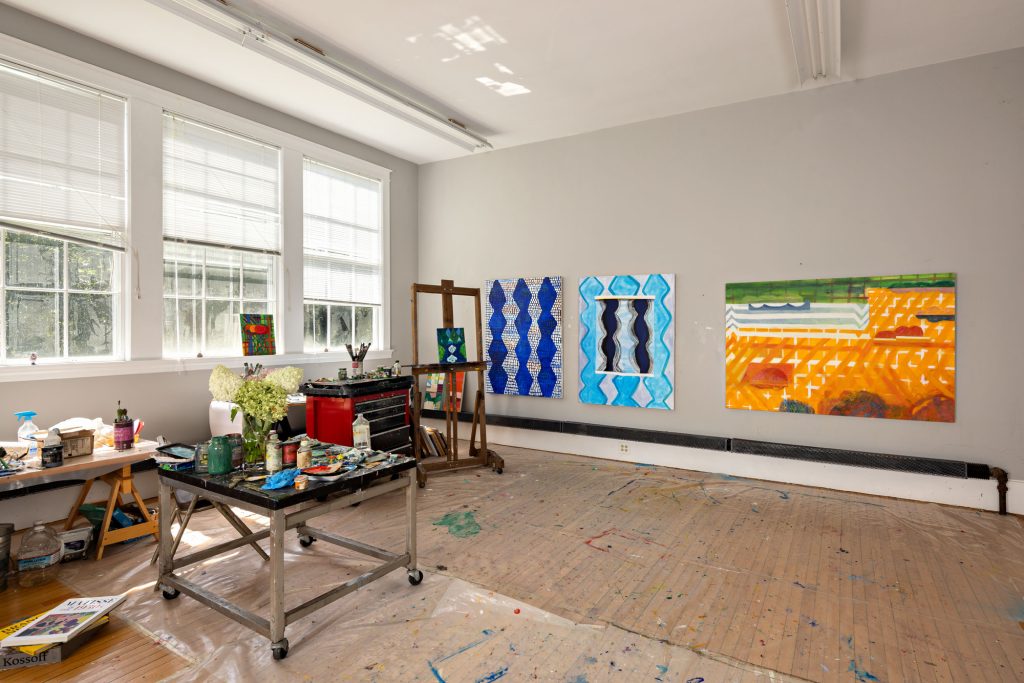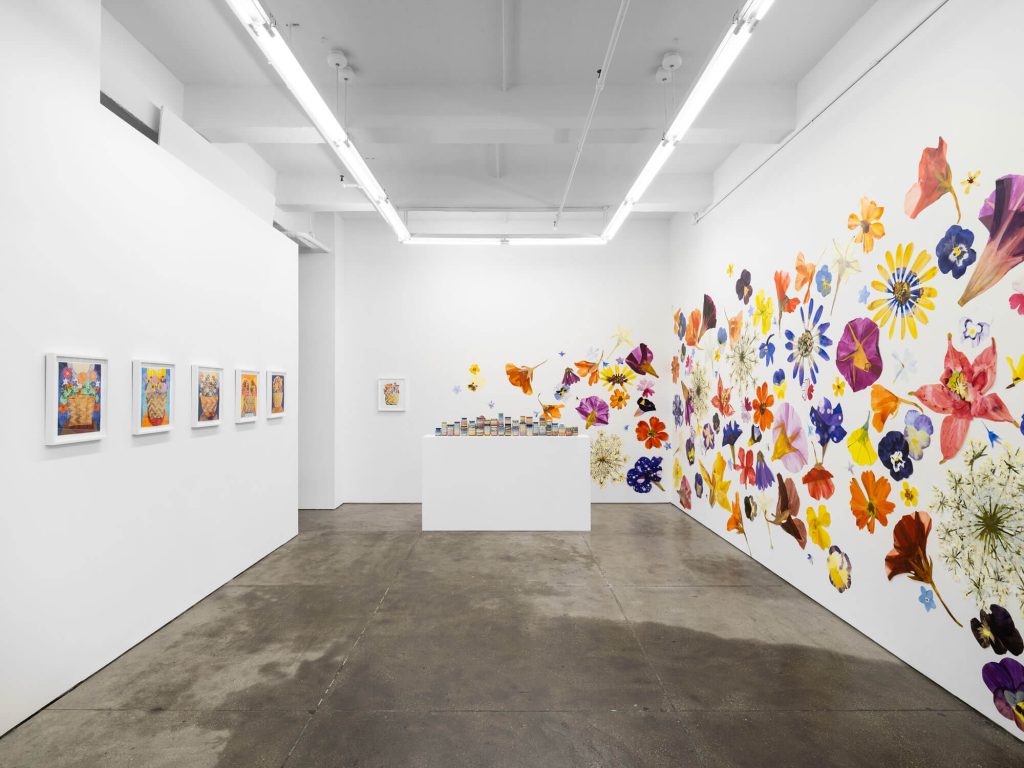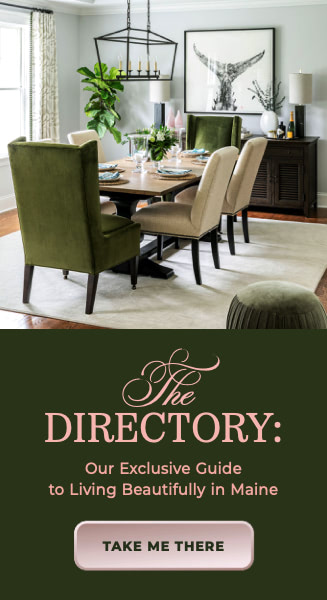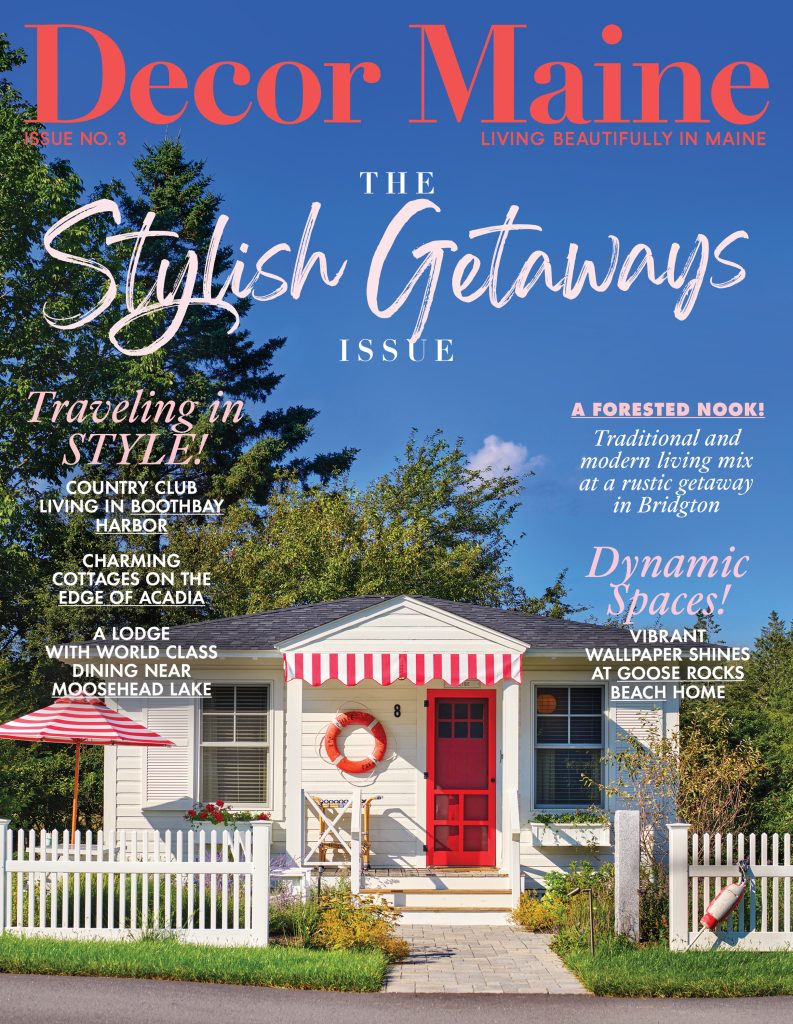Maine native Hannah Secord Wade returned to the state nine years ago after receiving a Master’s of Fine Art from Chelsea College of Arts in London and living for four years in Brooklyn, New York, where renting studio space was always a struggle. Her current studio is a converted post-and-beam garage attached to an 1830s farmhouse in Woolwich, set on 26 acres with sweeping views of the Sasanoa River, that she shares with her husband and three lively dogs. Working in a series united by a common color palette, the landscape is a jumping-off place for Wade’s sumptuously painted compositions that invite the viewer to travel within her imagined worlds. Since returning to Maine, her work has entered the Portland Museum of Art and the Farnsworth Art Museum collections. It has been included in notable exhibitions throughout the state, including at the Institute of Contemporary Art in Portland and the Center for Maine Contemporary Art in Rockland, where she is represented by Dowling Walsh Gallery.
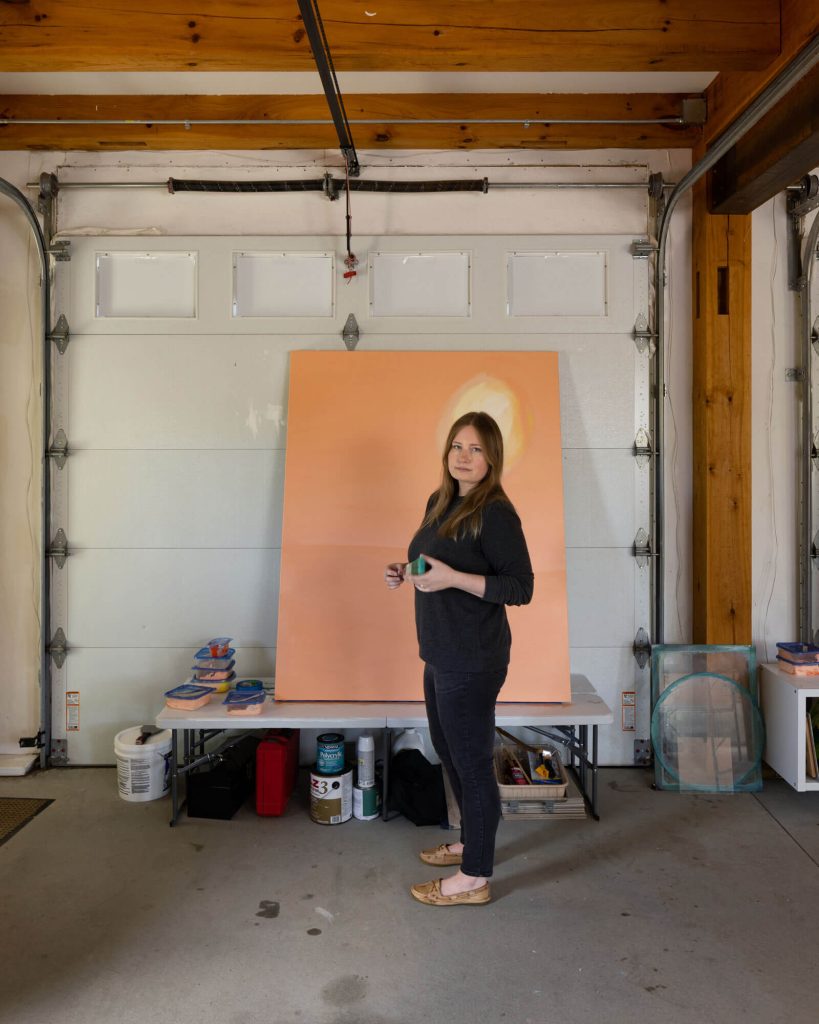
SM: Hannah, your latest body of work is painted in warm peach tones, a departure from the greens you’ve used in the past. What prompted the switch?
HW: The darker green palette that I’ve used for the past few series was reflective of a difficult time in my life, and there was an element of wanting to hide forms in monochrome and shadow. With my latest series, Base Tan, I was trying to move beyond that period and back into a lighter and more defined world. I ended up going a bit further afield, and Base Tan is set on an abandoned beach resort on Mars. Not every series has such a specific location, but I was thinking about avoidance and a search for peace and stillness. To me, the idea of colonizing Mars is ridiculous when we can’t even get our own planet in order, but there is something in that extreme escapism that is both distasteful and appealing. With that said, each series has multiple layers of meaning, and it is important to me that the works stay open to interpretation from the viewer.
SM: There’s an organic sense of ebb and flow, of containment and release in your work. How do you begin? Where do the ideas come from?
HW: I paint from imagination and have a fairly constant stream of ideas, which I think comes from working on the same themes for so many years. I make digital drawings almost every day, and then I wait to see which ones feel the most urgent to put on canvas, which is how a series is formed.
SM: You’ve often described your work as “representation being eaten by abstraction.” Can you expand on this and how it relates to your process?
HW: Most of the paintings have multiple layers that are built over time, and they often start out more representational. As they progress, the forms are simplified, blurred, or erased, which I think of as being “eaten” by new layers. Some works have a completely different painting underneath that has been consumed by a new one. In this way, the overarching cycle of containment and release is mirrored in my painting process.
SM: Your images are seductive in color and the lush layers of paint, but they also contain elements of humor and absurdity. How do you strike the balance?
HW: The humor serves a few functions to me. It interrupts the beauty of a landscape and acknowledges the absurdity of being caught in the same cycle for years. I also just think it is funny to make works with humor about serious subjects that I struggle with. For me, it adds a tension that feels more truthful.
SM: Maine has such a rich history of painting. Has being back influenced your work?
HW: One of the reasons I wanted to return to Maine is because there is that rich history, and it is a place that supports and respects artists. In particular, I saw Alex Katz’s work when I was very young, and it had an immense impact on me. He has been a primary influence throughout my entire career. I have a strong memory of seeing his seagull paintings for the first time. My work, Spit Warm Sea, is partially a homage to those works. On an internal level, living in the countryside again has allowed me to slow down and focus and has brought more cohesion to my work. I am more guided by the seasons here, with quiet winters and busy summers, and that balance works well for me.
SM: What’s underway in the studio? Is there any news on upcoming shows that you’d like to share?
HW: At the moment, I am working on my next series, which is still forming, but I’m thinking of theater stage sets and artificial landscapes. The Base Tan series will be shown for the first time at Dowling Walsh in 2024, which I’m very excited about

